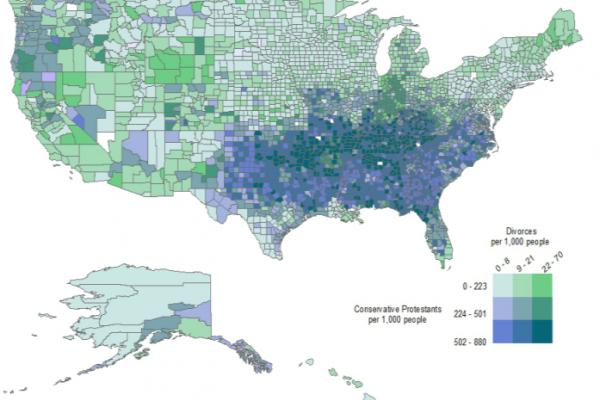Jan 22, 2014
Conservative Protestants in red states aren’t the only ones seeing high divorce rates — so are their neighbors, according to a new study.
Researchers found that simply living in an area with a large concentration of conservative Protestants increases the chances of divorce, even for those who are not themselves conservative Protestants.
According to researchers who took into account race, income, and other factors, marriage and fertility trends that are common among conservative Protestants — younger marriage, more kids, less higher education — affect all people in areas most populated by conservative Protestants, no matter their personal religious affiliation.
Read the Full Article

Already a subscriber? Login
